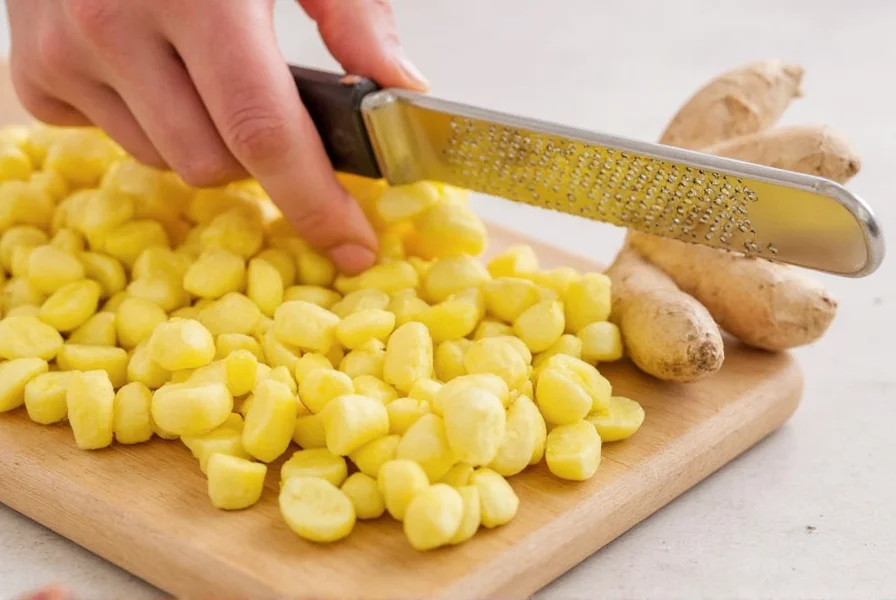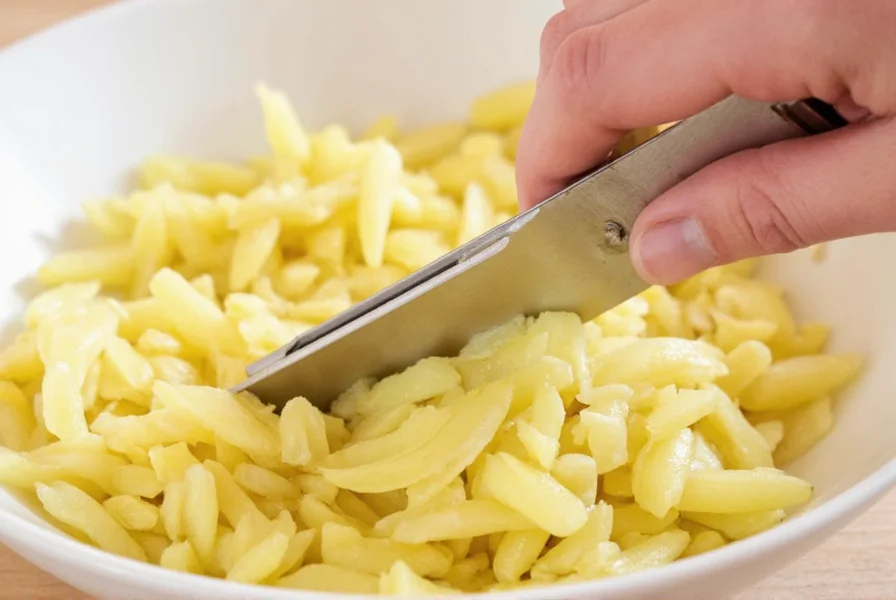Mastering Fresh Ginger Grating: Techniques for Perfect Results Every Time
Grating fresh ginger properly transforms your dishes with vibrant flavor and aromatic depth that powdered ginger simply can't match. Whether you're preparing Asian cuisine, baking, or making homemade remedies, understanding how to grate fresh ginger efficiently ensures you get the most from this versatile root.
Essential Tools for Grating Fresh Ginger
While several kitchen tools can handle ginger grating, each produces different results. Choosing the right tool depends on your recipe requirements and available equipment.
| Tool | Texture Produced | Best For | Efficiency Rating |
|---|---|---|---|
| Microplane zester | Fine, paste-like | Soups, sauces, marinades | ★★★★★ |
| Box grater (fine side) | Moderately fine | Stir-fries, dressings | ★★★★☆ |
| Traditional ginger grater | Ultra-fine, fibrous-free | Japanese cuisine, delicate dishes | ★★★★☆ |
| Food processor | Coarse, uneven | Large batch cooking | ★★★☆☆ |
Step-by-Step Guide to Perfect Ginger Grating
Follow these professional techniques to achieve restaurant-quality results with your fresh ginger.
Preparing Your Ginger Root
Start with a firm, plump ginger root that feels heavy for its size. The best ginger has smooth, taut skin with minimal wrinkles. Before grating, properly prepare your ginger:
- Rinse the ginger under cool water to remove surface dirt
- Use a spoon to peel the skin - this method removes less flesh than a vegetable peeler
- Cut the ginger into 2-3 inch sections for easier handling
- Pat dry with a clean kitchen towel to prevent slipping
The Microplane Method (Recommended)
For the finest, most consistent results when you need to grate fresh ginger without fibers:
- Secure your microplane on a stable surface or over a small bowl
- Hold the ginger firmly at a 45-degree angle to the grater
- Rub the ginger downward using short, controlled strokes
- Rotate the ginger piece periodically for even grating
- Stop when you reach the fibrous core to avoid stringy bits
Alternative Grating Methods
Don't have a microplane? These alternative techniques work well for different kitchen setups.
Using a Box Grater
When learning how to grate ginger for stir fry or other Asian dishes:
- Use the finest side of your box grater
- Place a paper towel beneath the grater to catch excess moisture
- Grate in downward motions with firm pressure
- Expect slightly more fibrous results than with a microplane
Traditional Japanese Suribachi Method
For authentic Japanese cuisine preparation:
- Use a ceramic mortar (suribachi) with a wooden pestle (surikogi)
- Grind the ginger in circular motions with moderate pressure
- Add a pinch of salt to help break down fibers
- Produces a slightly coarser but flavorful ginger paste
Professional Tips for Better Ginger Results
These expert techniques elevate your ginger grating experience from basic to exceptional.
Chill Your Ginger First
Place your ginger in the freezer for 15-20 minutes before grating. The slight firmness makes it easier to handle and produces cleaner shreds with less juice loss. This method works particularly well when you're learning how to grate ginger without creating a mess.
Avoid the Fibrous Core
The center of ginger roots contains tough fibers that can ruin texture. As you grate, watch for these stringy sections and stop before reaching them. For maximum yield without fibers, cut your ginger crosswise into discs before grating.
Use the Peel for Infusions
Don't discard your ginger peels! They're perfect for making ginger tea, broth infusions, or cleaning solutions. Simply simmer the peels in water for 10-15 minutes to extract their flavor and benefits.

Common Ginger Grating Mistakes to Avoid
Even experienced cooks make these errors when preparing fresh ginger.
Using a Dull Grater
A worn or dull grater crushes rather than cuts the ginger, releasing too much juice and creating a pulpy mess. Keep your microplane sharp by storing it properly and replacing it when the edges become rounded.
Grating Too Aggressively
Applying excessive pressure causes your knuckles to get too close to the blades and creates uneven texture. Use controlled, moderate pressure for consistent results when you grate fresh ginger.
Leaving Ginger Out Too Long
Freshly grated ginger oxidizes quickly, losing flavor and developing a slightly bitter taste. Use it within 1-2 hours for best results, or store properly as described below.
Storing Grated Ginger Properly
Maximize the shelf life of your freshly grated ginger with these storage techniques.
- For immediate use (within 24 hours): Place in an airtight container with a paper towel to absorb excess moisture
- For refrigeration (up to 1 week): Mix with a small amount of neutral oil before storing
- For freezing (up to 3 months): Portion into ice cube trays, cover with water or oil, then transfer to freezer bags
- Never store grated ginger in water alone as it dilutes the flavor
Frequently Asked Questions
Can I grate ginger without peeling it first?
Yes, you can grate unpeeled ginger, but the skin may create a slightly bitter taste and rougher texture. For most culinary applications, peeling produces superior results. If using organic ginger and concerned about waste, thoroughly scrub the skin clean before grating.
Why does my grated ginger become stringy?
Stringy grated ginger typically results from reaching the fibrous core of the root or using improper grating technique. To avoid fibers when grating fresh ginger, stop before you reach the center of the root and use short downward strokes rather than circular motions that pull out fibers.
How much grated ginger equals ground ginger?
As a general rule, 1 tablespoon of freshly grated ginger equals approximately 1/4 teaspoon of ground ginger. However, fresh ginger has brighter, more complex flavor notes, so consider using slightly more fresh ginger when substituting in recipes that call for ground.
What's the best way to prevent ginger stains on hands?
To avoid ginger stains on your hands when grating fresh ginger, wear thin food-safe gloves or rub your hands with lemon juice before handling ginger. If stained, rub hands with a mixture of baking soda and water, then wash thoroughly. Stainless steel soap bars also effectively remove ginger pigments.
Can I use a cheese grater for ginger?
Yes, you can use a cheese grater for ginger, particularly the fine side of a box grater. However, standard cheese graters often produce more fibrous results than specialized ginger graters or microplanes. For best results when using a cheese grater for ginger, chill the root first and use downward motions rather than circular ones.











 浙公网安备
33010002000092号
浙公网安备
33010002000092号 浙B2-20120091-4
浙B2-20120091-4